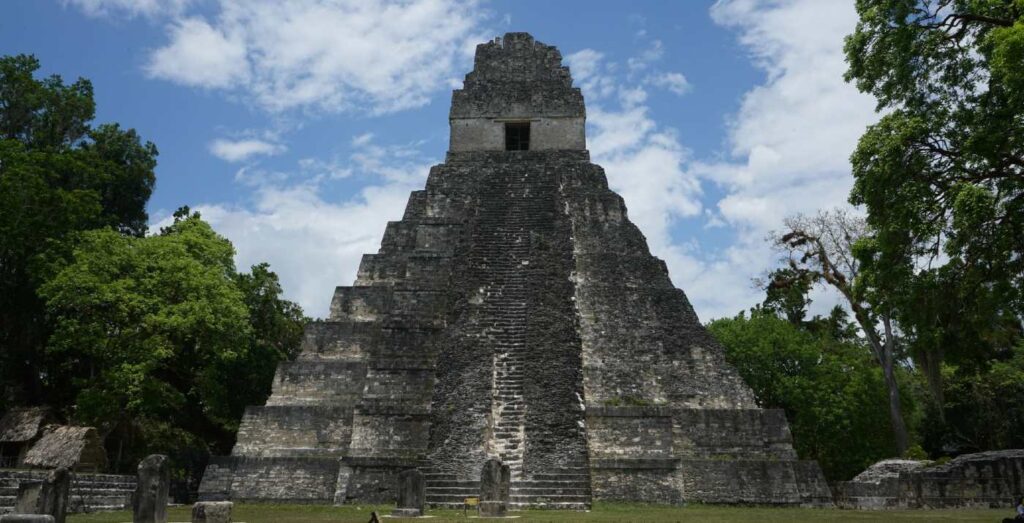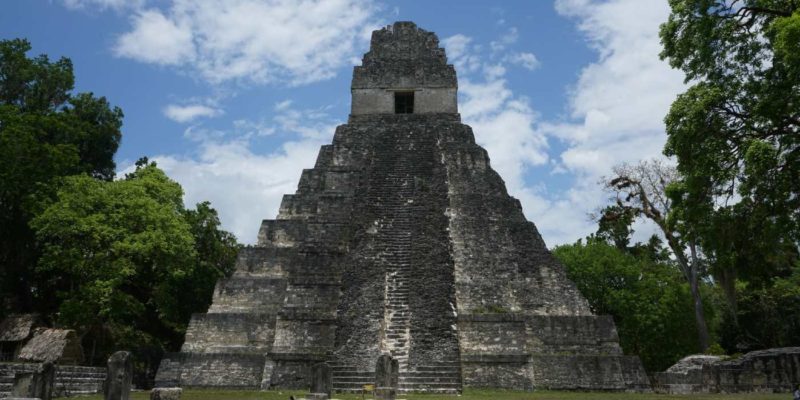Ancient Maya City Built Sophisticated Water Filtration System With Materials We Still Use Today
Archaeologists working at the site of the ancient Mayan city of Tikal in northern Guatemala have found a sophisticated water filtration system that would have been millennia ahead of its time.

Built at the end of a canal in the Corriental reservoir, a critical source of drinking water for the northern Maya, the mixture of zeolite and quartz sand at the mouth of the canal would have removed most of the contaminants such as cyanobacteria and heavy metals and it is still used in modern water filters even today.
“What is interesting is that this system would still be effective today and the Mayans discovered it more than 2,000 years ago,” Kenneth Tankersley, associate professor of anthropology at the University of Cincinnati, said in a statement.
And speaking of 2,000 years, it would be around 2,000 years from the estimated completion date of the filtration system at Tikal that the same materials would begin to be used in Europe.
“It was probably through very clever empirical observation that the ancient Maya saw that this particular material was associated with clean water and made an effort to bring it back,” said UC geography professor Nicholas Dunning, who participated in the investigation.
The end of an era
Tankersley and Dunning together published a research paper on the discovery. According to the corresponding statement on the university website, the quality and availability of water would have been one of the main concerns of the flourishing Mayan civilization of the 3rd century BC. C.
Although Tikal and the Mayans who built it centered their cities on a tropical rainforest, the porous limestone soil meant that the water never lingered for long, and in periods of prolonged drought, standing water like the Corriental reservoir became contaminated with bacteria. .
During the rainy seasons, the city, which has been listed as a World Heritage Site by UNESCO and could have housed around 60,000 people, was fed by rainwater from four reservoirs, the Corriental being the furthest from the city, at a distance of about 18 miles.
While the intuitive “molecular sieve” of quartz sand and zeolite filtered the water in Corriental, the other reservoirs closest to the city lacked this modern filtration system, and it was the resulting pollution combined with a period of climate change characterized by the reduction of rainfall which saw the powerful commercial and ceremonial center of the northern Mayan civilization abandoned during the 9th century.
“The main water sources for the core of the Tikal site, especially the Temple and Palace reservoirs, were seriously compromised as sources of drinking water at the end of the Late Classic period,” Dunning and Tankersley write in their article.
CHECK OUT: 3D printing artist breathes new life into artifacts and sculptures destroyed by ISIS
Corriental not only leaked heavy metals and bacteria, but also mercury, a toxic compound present in a pigment called cinnabar that the Mayans constantly used as decoration. The Temple and Palace reservoirs lacked the filtration system necessary to remove mercury runoff from cinnabar-painted buildings, and soil samples have shown that during the pre-abandonment period, mercury levels could have been ten times more than the lowest measure of toxicity.
“We don’t have absolute evidence, but we do have strong circumstantial evidence,” Dunning said in his statement. “Our explanation makes logical sense.”
READ: Egypt just discovered 27 sealed coffins in an ancient cemetery that were buried 2,500 years ago
“The ancient Mayans lived in a tropical environment and had to be innovative. This is a remarkable innovation, ”Tankersley said. “Many people consider that the Native Americans of the Western Hemisphere do not have the same engineering or technological strength as places like Greece, Rome, India or China. But when it comes to water management, the Mayans were millennia ahead. “
SHARE the great news of Tikal with your friends on social networks …








